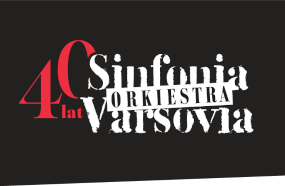Piotr Moss
Composer, born 1949 in Bydgoszcz.
After completing studies in composition in the Fryderyk Chopin Academy of Music in Warsaw in the class of Piotr Perkowski, Piotr Moss went to Paris to refine his skills under the direction of Nadia Boulanger. His widely varied works received many awards in national and international composer competitions. Apart from vocal and instrumental works, concertos and chamber music, the composer’s output includes music written for radio, theatre, film and television.
In 2000 Piotr Moss was nominated Chevalier dans l’ordre des Arts et des Lettres by the French Minister of Culture. In 2007 he received an award from the French Académie des Beaux Arts and in 2009, on the occasion of his 60th birthday and 40th anniversary of his artistic work, Piotr Moss received a special award from the Minister of Culture and National Heritage. He also holds a Polish Culture Medal of Merit.
In 2016 the composer was made Officier dans l’ordre des Arts et des Lettres.
Piotr Moss is also a laureate of many prestigious radio prizes, including the Złoty Mikrofon [Golden Microphone], Grand Prix at the “Dwa Teatry” [Two Theatres] Festival for his music to “Hamlet”, an award for music to “Death in Venice” and an honorary “Wielki Splendor” [Grand Splendour] award for his contribution to the Theatre of Polish Radio.
The album “Chagall for Strings”, recorded by Jadwiga Rappé and Opium Quartet received the Fryderyk award in 2014 for best album of contemporary music.
Concerto élégiaque for viola and orchestra
The Concerto was completed at the turn of 2016 and 2017. I composed it inspired by the artistic personality of Katarzyna Budnik-Gałązka, to whom the work is dedicated.
The character of the Concerto is described by its title. Its mood is predominantly desolate, tragic, even mournful, although there are more dynamic fragments, strongly rhythmic and motoric.
At the request of the soloist I introduced a part of alto saxophone obbligato – to a certain extent modelled after the soprano obbligato from my saxophone concerto Angst und Form.
As in many of my other works, there are hints of early music, but there are also many quotes from my own output and a number of somewhat forgotten musical gestures.
The concertante part of the viola remains within the bounds of classical virtuosity.
The Concerto consists of five movements, in principle played attacca, although they can also be played with pauses.
The first movement opens with a stark introduction, including a noteworthy triplet motif played by the piano. The opening of the viola part derives from the famous sarabande La Lugubre by François Couperin. This part consists of a succession of brief, strongly contrasting sequences.
In Interlude I the viola ceases to perform its concertante role, withdrawing to accompany from time to time the action led by the saxophone. The music in this movement is repetitive and obsessive.
The third movement begins with a brief evocation of the sarabande from the 1st movement, to be followed by a dynamic presto. The viola commences a more intensive dialogue with the saxophone. Echoes of a waltz can be heard.
Interlude II is again a repetitive movement. The saxophone again takes a leading role, except that the part of the viola is more extensive than in Interlude I. At one point the roles reverse: the viola takes over the motif played by the saxophone and begins to delineate the action. The movement ends with a startling orchestral tutti – a sort of a deformed march.
The last movement begins with a cadenza – a conversation between the viola and the saxophone, with the harp, celesta, piano and individual strings accompanying them from time to time.
The cadenza transforms into the final movement, perhaps the most virtuosic in the whole concerto. The music here is very dynamic, stunning, brillante. The headlong tempo of the finale is suddenly stopped by an Adagio tragico, with a return of the desolate mood from the 1st movement. The whole work, however, concludes with a bold Allegro.

